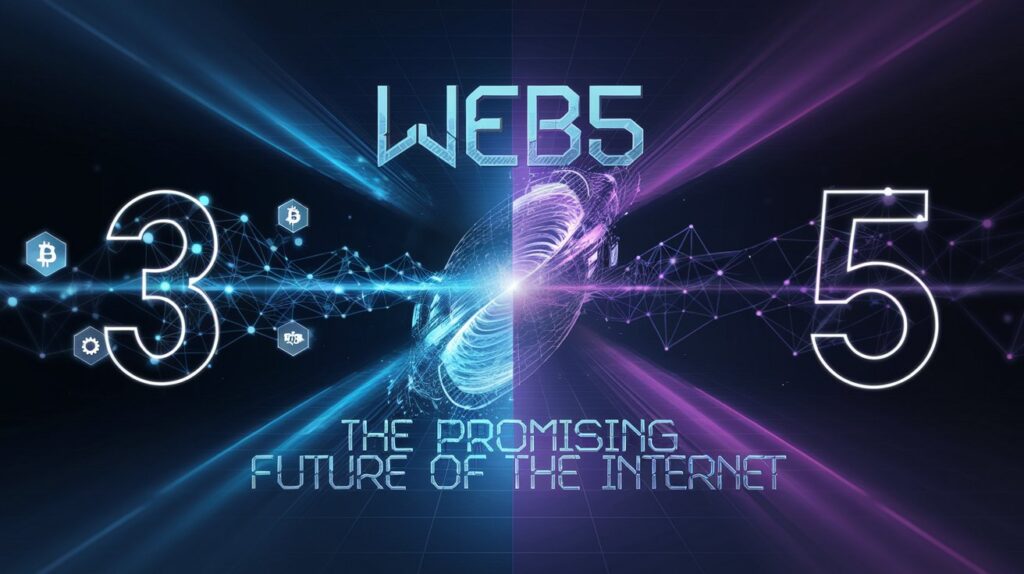Table of Contents
Introduction
The internet is evolving faster than ever, and just as Web3 has started gaining traction, a new concept—Web5—has emerged. Developed by Jack Dorsey’s TBD, Web5 aims to redefine the digital landscape by integrating the best of Web2 and Web3 while addressing their shortcomings. But what exactly is Web5, and how does it impact the future of the internet? Is Web3 already outdated before it has even been fully implemented? Let’s dive into the details.
Understanding Web3: A Decentralized Revolution
Web3 is built on blockchain technology and promises decentralization, giving users control over their data and digital assets. Key features of Web3 include:
- Decentralization: Eliminating intermediaries such as banks and big tech companies.
- Smart Contracts: Self-executing contracts that enable trustless transactions.
- Cryptocurrencies & NFTs: Digital assets that redefine ownership and monetization.
- Decentralized Applications (dApps): Applications running on blockchain networks instead of centralized servers.
While Web3 presents exciting innovations, it faces several challenges, including scalability issues, high transaction costs, and complex user experiences. These problems have opened the door for an even more ambitious vision: Web5.
What Is Web5?
Web5, a project by TBD (a subsidiary of Block, Inc., formerly Square), aims to create a fully decentralized web with a strong emphasis on personal identity and data ownership. Unlike Web3, which relies heavily on blockchain technology, Web5 focuses on:
- Decentralized Identity (DID): Users control their own identity without relying on centralized authorities.
- Decentralized Web Nodes (DWNs): A peer-to-peer network for securely storing and sharing data.
- Improved User Experience: No need for complex wallet setups or cryptographic keys.
How Web5 Differs from Web3
| Feature | Web3 | Web5 |
|---|---|---|
| Technology | Blockchain-based | Decentralized identity and web nodes |
| Ownership | Tokenized assets & smart contracts | User-controlled identity and data |
| Challenges | High fees, complex UX, energy-intensive | Simpler UX, lower costs, scalable |
| Vision | Decentralized finance & applications | Fully decentralized internet |
By focusing on identity over assets, Web5 eliminates the dependency on token economies and complex blockchain structures, making it more user-friendly and scalable.
Why Web3 Might Already Be Outdated
- Complexity for Users: Web3 demands users manage private keys, crypto wallets, and smart contracts—barriers that prevent mainstream adoption. Web5 simplifies this by making digital identity management seamless.
- Scalability Issues: Most Web3 applications run on blockchains that struggle with high transaction volumes, leading to congestion and expensive fees. Web5, leveraging decentralized web nodes, avoids these problems.
- Regulatory Uncertainty: Governments worldwide are imposing strict regulations on cryptocurrencies and blockchain networks, potentially limiting Web3’s adoption. Web5, with its focus on identity rather than crypto, might face fewer regulatory roadblocks.
- Energy Consumption: Blockchain networks, especially proof-of-work (PoW) systems, consume massive amounts of energy. Web5’s infrastructure is more efficient, making it a greener alternative.
The Future of the Internet: Web5’s Potential Impact
The introduction of Web5 could transform several industries, including:
1. Social Media
With decentralized identity, users could own their social media profiles, preventing platforms from controlling their data or banning accounts unfairly.
2. Finance & Banking
Web5 removes the reliance on cryptocurrencies, making decentralized financial services more accessible to the average user.
3. E-commerce & Digital Ownership
Decentralized identity can revolutionize authentication processes, eliminating the need for repeated logins and passwords across multiple platforms.
4. Healthcare
Patients could control access to their medical records without depending on centralized health providers.
5. Education & Credentials
Universities and employers could verify credentials instantly through decentralized identity solutions, reducing fraud.
Challenges Web5 Must Overcome
While Web5 presents promising solutions, it also faces hurdles such as:
- Adoption Barriers: Transitioning from Web2 and Web3 to Web5 requires mass adoption, which takes time.
- Infrastructure Development: Web5 still needs a solid ecosystem of applications and services.
- Security Concerns: Decentralized identity must be protected from potential cyber threats.
How to Prepare for the Future of the Internet
As Web5 gains momentum, developers, businesses, and individuals should stay informed about its progress. Here are a few steps to prepare:
- Learn About Decentralized Identity: Explore concepts like DIDs and DWNs.
- Follow Web5’s Development: Keep an eye on updates from Jack Dorsey’s TBD.
- Experiment with New Technologies: If you’re a developer, explore how Web5 could integrate into your projects.
Conclusion
Web5 has the potential to redefine the future of the internet by solving Web3’s shortcomings. While Web3 introduced decentralization, it also brought complexity and inefficiencies. Web5, with its focus on decentralized identity and a seamless user experience, could be the next major leap in internet evolution. Whether it will replace Web3 entirely remains to be seen, but one thing is certain: the internet is continuously evolving, and we must stay ahead of the curve.
For more insights on emerging technologies, check out our related articles:
What are your thoughts on Web5? Is it the future of the internet, or is Web3 here to stay? Share your opinions in the comments below!

